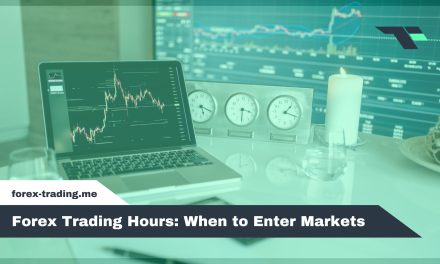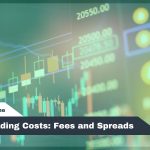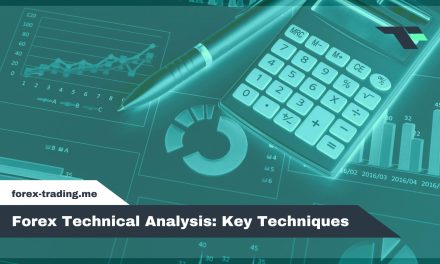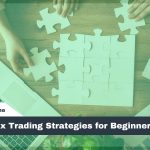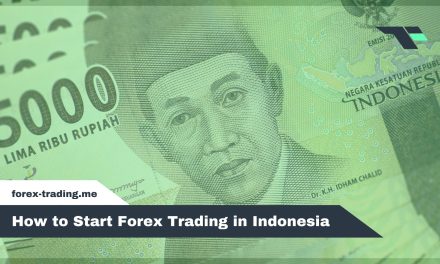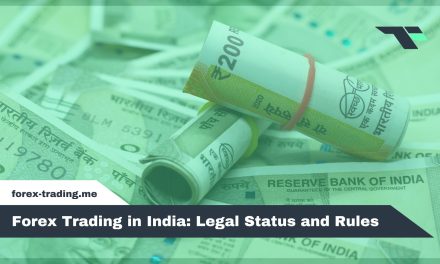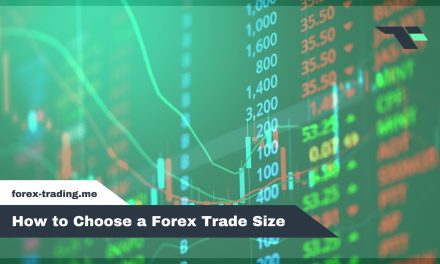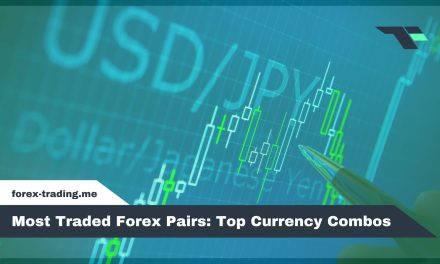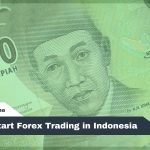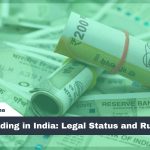
Forex Trading Costs: Fees and Spreads

Forex trading costs include broker commissions, bid-ask spreads, and swap rates for overnight positions. ECN brokers typically charge $2-$7 per standard lot with tighter spreads, while market makers embed fees within wider spreads. Swap rates reflect interest rate differentials between currency pairs, averaging -0.3 pips daily for certain positions. Hidden costs include slippage during volatility, account maintenance fees, and platform charges. Regulatory requirements like MiFID II enhance transparency, though cumulative fees greatly impact long-term profitability for thorough cost management strategies.
Table of Contents
What Are Forex Trading Fees?
Forex trading fees encompass all costs that brokers charge traders for accessing currency markets, executing trades, and maintaining positions over time. These charges typically include broker service fees such as commissions per trade, swap rates that apply when positions remain open overnight, and specialized markups for Islamic swap-free accounts that comply with religious trading requirements. Additionally, traders face margin interest costs when using leverage, as brokers effectively lend capital to amplify position sizes beyond the trader’s initial deposit.
Definition of Broker Service Charges
When currency traders execute transactions through retail brokers, they encounter various service charges that represent the broker’s compensation for facilitating market access and trade execution. These broker service charges encompass multiple cost components, including direct commissions, platform usage fees, and account maintenance charges. ECN brokers typically employ transparent commission structures, charging flat rates such as $3.50 per side per standard lot, which allows traders to see exact execution costs.
Conversely, market maker brokers often embed their compensation within wider bid-ask spreads rather than charging separate commissions, making their fee structure less obvious. Additional service charges may include platform fees for accessing advanced trading software, account maintenance fees for ongoing services, and various administrative costs that support the broker’s operational infrastructure and regulatory compliance requirements.
Swap, Rollover, and Swap-Free Markups
Beyond the immediate charges levied for trade execution and platform access, overnight position holding generates additional costs through interest rate differentials between the currencies being traded. These swap rates, also called rollover fees, reflect the overnight financing costs when traders maintain positions past the daily cutoff time. Brokers calculate swap rates based on the interest rate differential between the two currencies in a pair, with traders either paying or receiving these charges depending on their position direction.
For example, a typical daily swap on a EUR/GBP long position might incur approximately -0.3 pips. traders seeking swap-free accounts, often designed for Islamic trading requirements, typically face alternative markups instead of daily rollover fees. These swap-free accounts commonly add an additional 3-5 pips to the spread, replacing traditional overnight financing charges with upfront costs.
Margin Interest and Leverage Costs
While spreads and swaps represent the most visible trading expenses, leverage amplifies both potential returns and the underlying costs of borrowed capital through margin interest charges. Brokers charge margin interest on borrowed funds used to finance leveraged positions, typically calculating rates based on established benchmarks like LIBOR or SOFR plus additional spreads. These margin financing rates generally range from 1% to 3% annually on borrowed capital, accruing daily on open positions. Higher leverage ratios multiply both potential gains and financing costs proportionally. Additionally, margin calls triggered by adverse market movements can generate supplementary fees when brokers automatically close positions or require additional deposits. Traders must factor these leverage-related expenses into their overall cost calculations, particularly for positions held overnight or longer periods.
Here’s a quick-reference breakdown of the main fee categories and how they affect your bottom line, along with actionable tips to keep costs in check.
| Fee Component | What It Covers | Typical Cost | Impact on Profit | Tip to Optimize |
|---|---|---|---|---|
| Broker Service Charges | Commissions per trade, platform fees, account maintenance, and administrative/operational costs | ECN: ~$3.50 per side per standard lot; market makers embed in spreads | Raises break-even point; wider spreads can erode gains | Compare ECN vs. market maker rates; choose transparent commission plans |
| Swap / Rollover Fees | Overnight financing based on interest rate differential between currency pairs | ~–0.3 pips daily on EUR/GBP long | Overnight positions incur daily financing cost | Trade pairs with favorable carry rates or close before rollover |
| Swap-Free Markups | Alternative cost for Islamic accounts replacing standard swaps | +3–5 pips added to spread | Higher upfront spread offsets absence of overnight fees | Check swap-free spread tables and compare to standard swap costs |
| Margin Interest | Interest charged on borrowed funds used for leveraged positions, based on benchmarks like LIBOR or SOFR | ~1%–3% annualized on borrowed capital | Increases financing cost, especially for long-held positions | Use moderate leverage; monitor margin rate changes; close long-term trades early |
| Margin Call / Liquidation Fees | Additional charges or forced position closures when account equity falls below maintenance margin | Varies by broker; can include fixed penalty or higher spread on liquidation orders | Unexpected losses and extra fees when margin calls occur | Maintain a buffer above margin requirements; use stop-loss orders wisely |
Understanding Forex Trading Spreads
Forex spreads represent the fundamental cost structure that traders encounter with every transaction, manifesting as the difference between the bid price and ask price of currency pairs. Brokers typically offer either fixed spreads that remain constant regardless of market conditions, or variable spreads that fluctuate based on liquidity and volatility factors. The spread magnitude varies considerably between major pairs like EUR/USD, which maintain tight spreads due to high liquidity, and exotic pairs that experience substantially wider spreads, particularly during off-peak trading sessions when market participation decreases.
Fixed vs Variable Spread Models
The pricing mechanism that brokers use to determine spreads fundamentally shapes a trader’s cost structure and represents one of the most critical decisions when selecting a trading platform. Fixed spreads provide predictable costs, with brokers maintaining consistent pip distances regardless of market volatility. For example, a broker might offer a static 2.0-pip spread on EUR/USD during both calm trading periods and major news releases. Variable spreads fluctuate with market liquidity, typically offering tighter costs during normal conditions but widening greatly during high-impact events. These dynamic spreads may average 0.6 pips on EUR/USD under standard market conditions but spike above 3.0 pips during volatile news releases, creating unpredictable cost variations that affect trading profitability calculations.
Major vs Exotic Pair Spread Differences
Because liquidity fundamentally determines trading costs across different currency pairs, traders encounter vastly different spread structures when comparing major pairs like EUR/USD and GBP/USD against exotic combinations such as USD/TRY or EUR/ZAR. Major currency pairs benefit from deep market liquidity, resulting in consistently tight spreads that typically range from 0.7 to 1.2 pips during peak trading hours. In contrast, exotic pairs suffer from limited trading volume and fewer market participants, causing spreads to widen dramatically. USD/TRY spreads can exceed 20 pips due to low liquidity conditions, while other emerging market currencies experience similar pip differentials. These substantial spread differences directly impact trading profitability, making position sizing and cost calculations critical when selecting currency pairs for trading strategies.
Volatility & Session-Based Spread Widening
Market timing greatly influences spread costs, as trading sessions create distinct liquidity patterns that directly affect the price differential between bid and ask quotes. During high-liquidity periods like the London-New York overlap, major pairs maintain tight spreads due to increased market maker participation. Conversely, the Asian session often experiences wider spreads for non-Asian currencies as fewer institutions actively quote prices.
| Session/Event | EUR/USD Typical Spread | USD/JPY Typical Spread |
|---|---|---|
| London Session | 0.6-1.0 pips | 0.8-1.2 pips |
| New York Session | 0.7-1.1 pips | 0.9-1.3 pips |
| Asian Session | 1.2-2.0 pips | 0.7-1.1 pips |
| News Events | 2.0-4.0 pips | 2.5-5.0 pips |
| Weekend Gaps | 3.0-8.0 pips | 4.0-10.0 pips |
Economic announcements trigger significant spread expansion as brokers protect against sudden price movements and reduced liquidity.
Spreads shape your trading edge—knowing when to accept a fixed rate versus chasing variable spikes can save both pips and capital. Use this quick-reference guide to match spread types and market conditions to your strategy without wading through raw numbers.
| Spread Type | Pros | Cons | Best Use Case |
|---|---|---|---|
| Fixed Spreads | Predictable costs, no surprise widening | Often higher than average during calm markets | News-averse traders needing certainty |
| Variable Spreads | Typically lowest in steady conditions | Can spike beyond 3 pips during volatility | Scalpers and day traders on majors |
| Major Currency Pairs | Consistently tight due to deep liquidity | Tightness evaporates during off-sessions | All traders seeking reliable pricing |
| Exotic Currency Pairs | Potential lofty returns | Wide and erratic spreads, high slippage risk | Position traders with strong conviction |
| Session-Specific Spreads | Ultra-tight during London–NY overlap | Widened costs during Asian session or holidays | Adding precision to trade timing |
| News-Driven Spreads | N/A – inherently volatile | Spikes to 3–5 pips, risk of adverse fills | Use limit orders or skip event trading |
This framework helps you decide which spread environment aligns with your style—whether you prioritize cost consistency or chase pinched spreads for maximum profit potential.
Comparing Forex Trading Commissions
Beyond spreads, many forex brokers employ commission structures that charge explicit fees per transaction, creating distinct cost models that traders must evaluate based on their trading frequency and volume. ECN brokers typically charge commissions ranging from $2 to $7 per side per standard lot while offering tighter spreads, whereas market makers often embed their profits within wider spreads without separate commission fees. Understanding these different fee structures, along with their transparency implications and potential tax reporting requirements, enables traders to identify which broker model aligns most effectively with their trading strategy and regulatory obligations.
ECN vs Market Maker vs STP Fee Models
Broker execution models fundamentally shape how traders encounter costs, with each approach presenting distinct fee structures that can greatly impact overall trading expenses. ECN brokers provide direct market access through liquidity providers, typically offering raw spreads as low as 0.1 pips on EUR/USD while charging separate commissions around $3 per standard lot. Market makers quote fixed spreads between 0.8-1.2 pips without additional commissions, taking the opposite side of client trades. STP brokers route orders directly to liquidity providers without dealing desk intervention, usually combining moderate spreads with lower commissions than ECN models. Each structure presents trade-offs between transparent pricing, execution speed, and total cost per transaction, requiring traders to evaluate their trading frequency and strategy when selecting appropriate broker models.
Zero-Commission vs Commission Brokers
The choice between zero-commission and commission-based brokers represents one of the most critical cost decisions facing forex traders, as each pricing model embeds costs differently within the trading structure.
Zero-commission brokers incorporate their profits through spread markup, widening bid-ask spreads to compensate for waived commissions. Commission-based brokers charge explicit fees while offering tighter spreads, particularly in ECN environments.
Consider a practical comparison:
- Zero-commission broker: 1.8-pip EUR/USD spread
- Commission broker: 0.2-pip spread plus $4 round-turn fee
- Break-even point: approximately 5 standard lots daily
- Higher volume traders benefit from commission models
- Lower volume traders often prefer zero-commission structures
Traders must calculate their typical trading volume to determine which model minimizes total costs. The apparent savings of zero commissions often disappear when spread differences exceed commission fees across accumulated trading volumes.
Transparency, Taxes, and Regulatory Reporting
Although trading costs form the primary expense consideration for forex traders, regulatory transparency requirements and tax reporting obligations create additional financial complexities that vary considerably across jurisdictions. Under MiFID II regulations, European brokers must publish quarterly top-five spread data for major currency pairs, ensuring fee transparency for retail clients. Similarly, U.S. brokers must issue Form 1099-B statements to the Internal Revenue Service for capital gains reporting purposes. These regulatory frameworks mandate broker disclosure of trading costs and client activity, helping traders anticipate tax obligations. FATCA reporting requirements further complicate international trading scenarios, while different jurisdictions maintain varying standards for trade reporting and fee transparency. Understanding these regulatory obligations helps traders select compliant brokers and properly prepare for tax filing requirements.
Selecting the right commission model is crucial for balancing costs, execution quality, and regulatory compliance. Use the table below to compare key broker structures side by side, so you can pinpoint which approach aligns best with your trading style, volume, and reporting obligations.
| Commission Model | Cost Structure | Typical Spread / Commission | Transparency & Reporting | Ideal Trader Profile | Optimization Tip |
|---|---|---|---|---|---|
| ECN | Raw spreads + explicit per-lot fees | 0.1–0.3 pips on EUR/USD + $3–$5 per lot | Highly transparent; fees itemized on each trade | High-volume scalpers and algorithmic traders | Consolidate orders to meet volume discounts and negotiate rebates |
| Market Maker | Wider fixed spreads with no separate commission | 0.8–1.2 pips on EUR/USD | Spread data often published quarterly under MiFID II / Form 1099-B reporting in US | Beginners and swing traders valuing predictable costs | Use limit orders to avoid hidden requotes and check spread tables pre-trade |
| STP (Straight Through Processing) | Mid-range variable spreads + modest commissions | 0.4–0.8 pips on EUR/USD + $2–$3 per lot | Mix of raw and markup data; must review broker disclosures | Day traders seeking balance between spread and commission | Time trades for peak liquidity to minimize spread volatility |
| Zero-Commission | Spread markup replaces explicit fees | 1.5–2.0 pips on EUR/USD | Look for published spread averages (MiFID II / IRS reporting) | Low-frequency or small-lot traders avoiding upfront fees | Calculate your monthly lot volume; switch to commission model if breakeven exceeds 5 lots/day |
| Swap-Free / Islamic Accounts | No overnight financing; adds 3–5 pips to spreads | 2.0–3.0 pips on major pairs | Check documentation for swap-free disclosures and local tax treatment | Traders requiring Sharia-compliant structures | Compare swap-free spread markups against standard swap costs for longer holds |
Each row distills complex fee structures into actionable insights—so you can evaluate commissions, spreads, and regulatory considerations at a glance.
Hidden and Additional Forex Trading Costs
Beyond visible spreads and commissions, numerous hidden costs can greatly impact trading profitability through unexpected charges that many traders overlook during broker evaluation. These additional expenses range from execution-related costs like slippage to administrative fees for account maintenance, platform access, and technical infrastructure services. Understanding these ancillary charges becomes essential for accurate cost assessment, as surveys indicate that slippage alone costs 40% of retail traders more than one pip per trade on average, while inactive accounts frequently incur monthly maintenance fees of $10-$20.
Slippage and Execution Strategy Costs
Every forex trade carries the risk of slippage, a cost that materializes when orders execute at prices different from those initially requested or expected. This price drift occurs most frequently during volatile market conditions, major economic announcements, or periods of low liquidity. Market orders face higher slippage risk since they prioritize speed over price, while limit orders provide price protection but may not fill during rapid market movements.
Slippage noticeably impacts trading profitability through unexpected execution costs:
- Market orders during EUR/USD news events average 2–3 pip slippage
- Mini lot slippage costs approximately $20–$30 per occurrence
- Fast-moving markets increase execution quality deterioration
- Stop-loss orders frequently experience negative slippage
- Limit orders reduce slippage risk but sacrifice execution certainty
Understanding execution strategy trade-offs helps traders balance speed, price control, and fill probability.
Deposit, Withdrawal, and Currency Conversion Fees
The funding process for forex trading accounts introduces a layer of costs that traders often underestimate when calculating their total trading expenses. Deposit fees vary considerably by payment method, with bank wire transfers typically charging $10–$30 each way, while credit cards and electronic wallets may impose different fee structures. Withdrawal costs follow similar patterns, creating ongoing expenses that accumulate over time. Currency conversion represents another substantial cost factor when traders fund accounts in currencies different from their base currency. Brokers often apply conversion markups of 0.5%–1% above interbank rates, effectively increasing the true cost of account funding. Strategic payment method selection and maintaining accounts in preferred currencies can minimize these transaction-related expenses while preserving capital for actual trading activities.
Inactivity, Maintenance, and Platform Fees
Many forex brokers impose a range of additional fees that can greatly erode trading capital, particularly for traders who maintain accounts with minimal activity or require advanced platform features. Inactivity fees typically activate after 90 days without trading activity, commonly charging $10 monthly until traders resume activity or close their accounts. Account maintenance charges may apply regardless of trading frequency, while platform subscription costs affect traders seeking enhanced charting capabilities or premium data feeds.
Common additional fees include:
- Inactivity fees of $10-25 monthly after 90 days dormancy
- Account maintenance charges ranging from $5-15 quarterly
- Premium charting platform subscriptions ($14.95-$29.95 monthly)
- Real-time data feed costs for advanced market information
- Research report access fees for fundamental analysis tools
These expenses accumulate quickly for inactive traders, making broker selection essential for cost management.
VPS and Technical Infrastructure Fees
Beyond standard account fees, forex traders implementing automated strategies frequently encounter technical infrastructure costs that can substantially impact their overall trading expenses. Virtual Private Server (VPS) solutions represent the most common additional expense, as algorithmic and high-frequency traders require low-latency connections to execute trades efficiently. Quality forex VPS services typically range from $10 to $30 monthly for sub-30-millisecond latency, while enterprise-grade solutions can exceed $100 per month. These remote servers minimize execution delays that could affect profitability, particularly for scalping or news-based strategies. Traders must factor these ongoing subscription costs into their overall trading budget, as reduced latency often translates to better fill prices and reduced slippage, potentially offsetting the monthly infrastructure investment.
Education, Subscriptions, and Signal Fees
Professional forex trading often involves supplementary costs for educational resources, analytical tools, and signal services that extend far beyond basic brokerage fees. These ongoing expenses can greatly impact overall trading profitability, requiring careful evaluation of their cost-effectiveness.
Trading education and analysis tools typically include:
- Professional forex courses ranging from $200 to $2,000 one-time payments
- Monthly signal subscriptions charging $50–$200 with 60–70% average accuracy rates
- Premium analytical software and indicator packages
- Personal mentorship programs with experienced traders
- Subscription-based market research and economic calendar services
Traders must assess whether these educational investments generate sufficient returns to justify their costs. Signal services, despite their monthly fees, often deliver mixed results that may not consistently cover subscription expenses. Calculating the return on investment for educational resources helps traders determine which supplementary services provide genuine value versus unnecessary expenses.
Psychological and Execution Quality Costs
While educational and subscription costs represent quantifiable expenses, execution quality and psychological factors create less visible but equally damaging financial impacts that often exceed traditional trading fees. Poor execution quality manifests through requotes, delayed fills, and increased latency, forcing traders to accept unfavorable prices or miss profitable opportunities entirely. These technical deficiencies compound psychological stress, leading to decision fatigue and emotional trading patterns that erode profits systematically.
Studies demonstrate that traders experiencing more than five requotes per day underperform by an average of 15% due to stress-induced poor decisions. Mental fatigue from constant technical interruptions impairs judgment, causing traders to deviate from proven strategies or exit positions prematurely. The cumulative cost of suboptimal execution and compromised decision-making often surpasses all other trading expenses combined.
Local Taxes and Reporting Expenses
Tax obligations represent one of the most overlooked cost components in forex trading, with jurisdictional differences creating notable variations in traders’ final profitability calculations.
Local tax regulations greatly impact net trading returns through varying treatment of forex gains. In the United States, Section 988 classifies forex profits as ordinary income, subjecting traders to rates reaching 37%. The United Kingdom applies capital gains taxation up to 20% on forex earnings, while other jurisdictions maintain different frameworks entirely.
Professional accounting assistance often becomes necessary for proper compliance:
- Annual tax preparation fees ranging from $200-$2,000 depending on complexity
- Quarterly estimated payment calculations for active traders
- Record-keeping software subscriptions and maintenance costs
- Professional consultation for tax optimization strategies
- Audit preparation expenses if regulatory scrutiny occurs
These reporting expenses and tax liabilities require careful consideration when calculating true trading profitability across different markets.
Mobile vs Desktop Trading Cost Differences
How do trading platforms influence execution costs beyond the visible spread displays? Some brokers apply wider spreads or additional fees to trades placed via mobile platforms compared to desktop interfaces, offsetting perceived higher risk or lower liquidity conditions. These platform-based variations can greatly impact trading expenses, particularly for active traders who frequently execute positions through mobile applications.
Broker audits reveal mobile spreads on EUR/USD can be 0.2–0.4 pips wider than desktop during peak hours, translating to an extra $2–$4 per standard lot. These mobile execution costs and app trading markups often remain undisclosed in standard fee schedules. Traders should verify spread tables across each platform interface before committing to a broker, ensuring transparent cost structures regardless of chosen trading platform.
Copy-Trading, Promotions, and Rebate Structures
Three distinct cost structures operate beyond traditional spreads and commissions in modern forex trading, each capable of noticeably altering a trader’s final expense calculations.
Copy-trading services introduce performance-based fees where signal providers typically charge 20% of generated profits, alongside potential social trading markups that brokers add to standard spreads. These additional costs can notably impact net returns despite the convenience of automated strategy replication.
Promotional offers and rebate structures create complex pricing scenarios requiring careful evaluation:
- Cashback programs offering $1-5 per lot based on trading volume
- Welcome bonuses that may include higher spreads during promotional periods
- Rebate models tied to monthly trading requirements
- Performance fee waivers for initial copy-trading periods
- Volume-based commission reductions for high-frequency traders
Traders must calculate true net costs after factoring in rebates, as promotional discounts often conceal elevated base pricing structures.
Support Quality, Requotes, and Risk-Management Charges
Several hidden cost factors in forex trading emerge from service quality issues and risk-management features that traders often overlook when calculating their total trading expenses. Poor customer support responsiveness during critical market moments can lead to delayed problem resolution, potentially resulting in missed opportunities or unfavorable trade executions. Requotes frequently occur during volatile market conditions when brokers cannot fill orders at displayed prices, forcing traders to accept less favorable rates that increase execution costs. Additionally, many brokers offer Guaranteed Stop-Loss Orders (GSLO) as premium risk-management tools, typically charging 0.5–2.0 pip premiums over standard stop orders, costing approximately $5–$20 per standard lot. These intangible factors considerably impact overall trading profitability and should be carefully evaluated when selecting brokers.
Affiliate and Partnership Markups
Brokers frequently structure affiliate and partnership programs that can silently inflate trading costs for referred clients, creating an additional expense layer that many traders never recognize. These hidden markups compensate partners while increasing execution costs, with industry data suggesting affiliate arrangements can add 0.1–0.2 pips per trade, costing traders an extra $1–$2 per standard lot.
Traders should verify fee structures independently, even when referred through trusted sources:
- Compare spreads directly with broker websites rather than partner platforms
- Request fee disclosure documents showing exact markup percentages
- Check rebate programs that may indicate inflated base costs
- Review partnership agreements for transparency about cost sharing
- Monitor execution quality for potential requote increases from marked-up spreads
Understanding these partnership dynamics helps traders make informed decisions about broker selection and cost optimization.
Hidden costs can quietly erode trading profits if not monitored closely. Below is a consolidated overview of each major hidden expense, its potential impact on your bottom line, and a practical tip to keep these charges under control.
| Cost Category | Description | Potential Impact | Pro Tip |
|---|---|---|---|
| Slippage & Execution | Price deviation when market orders fill at worse rates during volatility | 2–3 pips per trade can reduce returns by $20–$30 | Use limit orders around news events to lock in expected prices |
| Deposit, Withdrawal & Conversion Fees | Bank wires ($10–$30), card/e-wallet charges, plus 0.5–1% currency markups | Adds up to hundreds annually, cutting available capital | Fund in base currency and choose low-fee methods |
| Inactivity & Maintenance | Dormant accounts incur $10–$25 monthly after 90 days; maintenance fees $5–$15 quarterly | Unexpected fees drain small accounts | Close unused accounts or execute minimal trades to reset timer |
| VPS & Infrastructure | Virtual Private Server costs $10–$30 monthly (enterprise $100+); required for low-latency EAs | Monthly expense that chips away at automated strategy profits | Compare VPS providers for best latency/price ratio |
| Education, Subscriptions & Signals | One-time courses ($200–$2,000), monthly signals $50–$200, and premium tool fees | Recurring costs may exceed incremental P&L gains | Track ROI on each service; cancel underperforming subscriptions |
| Psychological & Execution Quality | Requotes and delays lead to emotional trades; studies show 15% underperformance with >5 requotes/day | Poor execution and stress can outweigh direct fees | Choose brokers with proven low-requote rates; practice stress management |
| Local Taxes & Reporting | US Section 988 up to 37% tax; UK capital gains up to 20%; accounting fees $200–$2,000 | Significant portion of net profits eaten by taxes | Consult a tax professional early to optimize filings |
| Mobile vs Desktop Execution | Mobile spreads 0.2–0.4 pips wider, costing an extra $2–$4 per lot during peak hours | Higher costs on mobile can cut into scalping margins | Always compare spreads on both platforms before trading |
| Copy-Trading, Promotions & Rebates | Performance fees (20% of profits), $1–$5 per-lot rebates, and promotional spread markups | Net returns may be lower than advertised after fees | Calculate true net cost post-rebate; read promo terms carefully |
| Support, Requotes & Risk Management | Premium GSLO fees of 0.5–2.0 pips ($5–$20 per lot), plus costs from slow support | Missed opportunities and higher stop-out risks | Test GSLO impact via demo; choose brokers with 24/5 responsive support |
| Affiliate & Partnership Markups | Hidden markups of 0.1–0.2 pips per trade ($1–$2 per lot) to compensate partners | Incremental cost per trade that accumulates quickly | Verify spreads directly on broker’s site; request full markup disclosure |
Regulatory Impact on Forex Trading Fees
Regulatory frameworks across major financial jurisdictions directly influence the types of fees forex brokers can charge and how transparently they must disclose these costs to traders. In Europe, MiFID II regulations require brokers to publish detailed pricing information and maintain strict standards for fee transparency, while in the United States, National Futures Association rules establish capital requirements and disclosure standards that shape broker cost structures. These regulatory requirements create varying fee environments depending on where a broker is licensed, affecting everything from spread transparency to the permissibility of certain commission structures.
MiFID II Influence on European Brokers
Since its implementation in January 2018, MiFID II has fundamentally transformed how European forex brokers operate by imposing stringent transparency requirements on all trading costs. Under ESMA oversight, brokers must provide detailed cost disclosure and demonstrate best execution practices across all client transactions.
MiFID II mandates specific reporting obligations that directly benefit forex traders:
- Quarterly reports detailing average spreads for the top five currency pairs
- Thorough commission reporting with itemized breakdowns
- Real-time execution quality data accessible to clients
- Annual cost and charges statements for retail investors
- Transaction-level reporting to regulatory authorities within specified timeframes
Non-compliance carries severe penalties, with fines reaching €5 million or 10% of annual turnover. This regulatory framework guarantees European traders receive unprecedented transparency regarding their trading costs, enabling more informed broker selection and cost optimization strategies.
US NFA Rules and Fee Transparency
The National Futures Association operates as the primary self-regulatory organization overseeing forex dealers in the United States, establishing extensive guidelines that directly shape how brokers structure their fee models and maintain operational transparency. NFA Rule 2-43 mandates that registered forex dealers segregate customer funds from company assets, ensuring client money remains protected even during broker financial difficulties. This segregation requirement influences broker capital allocation and operational costs, which can impact fee structures passed to traders.
| NFA Requirement | Impact on Trading Costs |
|---|---|
| Capital Requirements | Higher operational expenses may increase spreads |
| Fee Disclosure Rules | Complete transparency in all trading charges |
| Client Fund Segregation | Protection without additional trader fees |
| CFTC Compliance Reporting | Administrative costs reflected in broker pricing |
Violations of capital requirements trigger $25,000 penalties, encouraging brokers to maintain conservative fee structures that support regulatory compliance.
Regulatory oversight not only dictates how brokers must disclose fees but also shapes the range of services they can offer and the protections traders receive. The table below highlights the key requirements under MiFID II and U.S. NFA rules, explains their impact on cost structures, and offers a strategic tip to help you capitalize on these regulations.
| Regulation | Key Requirement | Impact on Brokers and Traders | Pro Tip |
|---|---|---|---|
| MiFID II (Europe) | Publish quarterly average spreads and real-time execution quality | Forces brokers to maintain competitive spreads and transparent reporting; reduces hidden markups | Compare published spread reports to spot brokers with consistently tight pricing |
| Provide transaction-level cost and charge statements | Ensures traders see exact breakdowns of commissions, fees, and any ancillary charges | Review annual cost statements to identify rising fee trends early | |
| Demonstrate best execution practices | Brokers must show they route orders to venues offering optimal price and speed | Request proof of order routing quality when choosing a broker | |
| Risk of fines up to €5 million or 10% of annual turnover | Non-compliant brokers may incur heavy penalties, deterring opaque fee structures | Prioritize brokers with spotless compliance records to minimize counterparty risk | |
| NFA Rules (U.S.) | Segregate client funds from company assets | Protects traders’ capital even if a broker faces insolvency; may slightly raise operational costs | Choose U.S.-regulated brokers for enhanced fund security |
| Comply with capital requirements (Rule 2-43) | Brokers maintain higher capital buffers, which can translate to more stable fee models | Verify broker’s NFA membership and capital compliance status | |
| Disclose all trading charges in fee schedules | Brokers must itemize every cost—spreads, commissions, and platform fees—up front | Scrutinize the broker’s fee schedule for any unexplained add-ons | |
| File CFTC compliance reports | Administrative compliance costs may filter into slightly wider spreads | Opt for brokers with streamlined reporting to benefit from lower ongoing fees |
Long-Term and Strategic Cost Analysis
While individual trading fees may appear manageable, their cumulative impact over months and years can profoundly erode profitability, with traders often underestimating how spreads, swaps, and service subscriptions compound into substantial annual expenses. The rise of automated trading strategies has introduced additional cost layers including VPS hosting, software licenses, and signal services that require careful evaluation against potential returns. Strategic traders increasingly recognize the importance of testing cost structures through demo accounts before committing capital, as market fee trends continue evolving with regulatory changes and broker competition.
Cumulative Impact of Swaps and Spreads
When traders focus primarily on entry and exit strategies, they often underestimate how seemingly minor daily costs can devastate long-term profitability through relentless accumulation. These holding costs compound silently, creating substantial expense erosion that transforms profitable strategies into losing propositions.
Consider a practical example: holding a 1.0-lot EUR/JPY position with a –0.2 pip swap for 30 days costs approximately $60. When combined with daily spread costs of 0.8 pips over the same period (approximately $240), the total holding cost reaches $300. This cumulative impact affects various trading approaches:
- Position traders holding trades for weeks or months
- Carry trade strategies targeting interest rate differentials
- Grid trading systems with multiple open positions
- Swing traders maintaining positions across weekends
- Algorithm-based strategies with frequent position adjustments
Automated Strategy Expense Trends
Beyond spread and swap accumulation, automated trading strategies introduce an entirely different cost structure that many forex traders fail to properly account for when evaluating their overall profitability. Expert advisors, algorithmic systems, and robot trading platforms require ongoing subscription fees, premium data feeds, and dedicated hosting services that can considerably impact net returns.
| Cost Component | Monthly Range |
|---|---|
| Expert Advisor Subscription | $50-$150 |
| Premium Data Feeds (Level II) | $20-$50 |
| VPS Hosting | $15-$30 |
| Backtesting Platform Access | $10-$25 |
Strategy maintenance fees, live data costs, and backtesting expenses create fixed monthly obligations regardless of trading volume. Combined automation expenses frequently exceed $100 monthly, requiring traders to generate substantial profits just to cover operational overhead before achieving actual profitability.
Demo vs Live Account Cost Testing
The disparity between demo and live trading environments creates a significant blind spot for traders attempting to accurately forecast their operational expenses. Brokers typically present spreads in demonstration accounts that are 10-20% narrower than those encountered in live market conditions, while slippage rarely occurs during simulated trading compared to the 0.5-1.5 pips per trade experienced in real accounts.
Effective demo account cost testing requires strategic approaches:
- Compare spreads across identical currency pairs during overlapping trading sessions
- Monitor execution speeds and slippage patterns during high-volatility periods
- Test order fills at critical support and resistance levels
- Record swap rates and rollover charges for overnight positions
- Document any requote frequency differences between account types
This systematic comparison enables traders to establish realistic cost expectations before committing capital.
Market Fee Trends and Statistics
As competitive pressures intensify across the forex industry, trading costs have experienced a pronounced downward trajectory that fundamentally reshapes cost expectations for modern traders. Industry surveys reveal that average EUR/USD spreads have contracted from approximately 1.0 pip five years ago to around 0.7 pips today, representing a significant 30% reduction in direct trading costs.
| Cost Component | Five Years Ago | Current Average |
|---|---|---|
| EUR/USD Spread | 1.0 pip | 0.7 pip |
| Zero-Commission Accounts | Limited | 35% growth |
| Regulatory Compliance | Moderate | Enhanced |
| Broker Competition | Standard | Intensified |
The proportion of zero-commission accounts has expanded by 35% over the past three years, reflecting brokers’ strategic shift toward spread-only revenue models. This evolution benefits traders through increased transparency and reduced complexity in cost calculations, while regulatory changes continue driving standardization across different jurisdictions.
Over time, small daily fees and subscription costs can quietly erode returns. The table below distills the long-term expense drivers—from holding costs to automation overhead—and offers concrete examples and actionable tips to keep your strategy both profitable and sustainable.
| Aspect | Long-Term Impact | Annualized Cost Example | Pro Tip |
|---|---|---|---|
| Cumulative Swaps & Spreads | Holding a single 1.0-lot position for 30 days can cost ~$300, turning profitable strategies into break-even | $300 per 30-day hold for one position | Focus on high-probability setups; close positions before swaps accrue |
| Automated Strategy Expenses | Monthly VPS, data feeds, and EA subscriptions often exceed $100, creating fixed overhead irrespective of volume | $1200+ per year for VPS and subscriptions | Bundle services (e.g., VPS + data) or negotiate annual rates |
| Demo vs Live Cost Testing | Demo spreads are 10–20% narrower, and slippage is absent, masking true execution costs | Live slippage of 0.5–1.5 pips per trade | Track demo vs live slippage for key currency pairs before funding |
| Market Fee Trends & Statistics | EUR/USD spreads have fallen from 1.0 pip to 0.7 pip, while zero-commission accounts grew 35%, lowering costs | 30% reduction in spread drag over five years | Regularly review broker fee reports; switch to zero-commission when volume justifies |
Conclusion
Successful forex trading requires thorough understanding of all associated costs, from visible spreads and commissions to hidden fees like slippage and overnight swaps. Traders must evaluate broker pricing models, regulatory impacts, and long-term expense accumulation when developing strategies. By accurately calculating total trading costs and selecting appropriate brokers, traders can establish realistic profit expectations and implement cost-effective approaches that preserve capital while maximizing potential returns in competitive currency markets.


